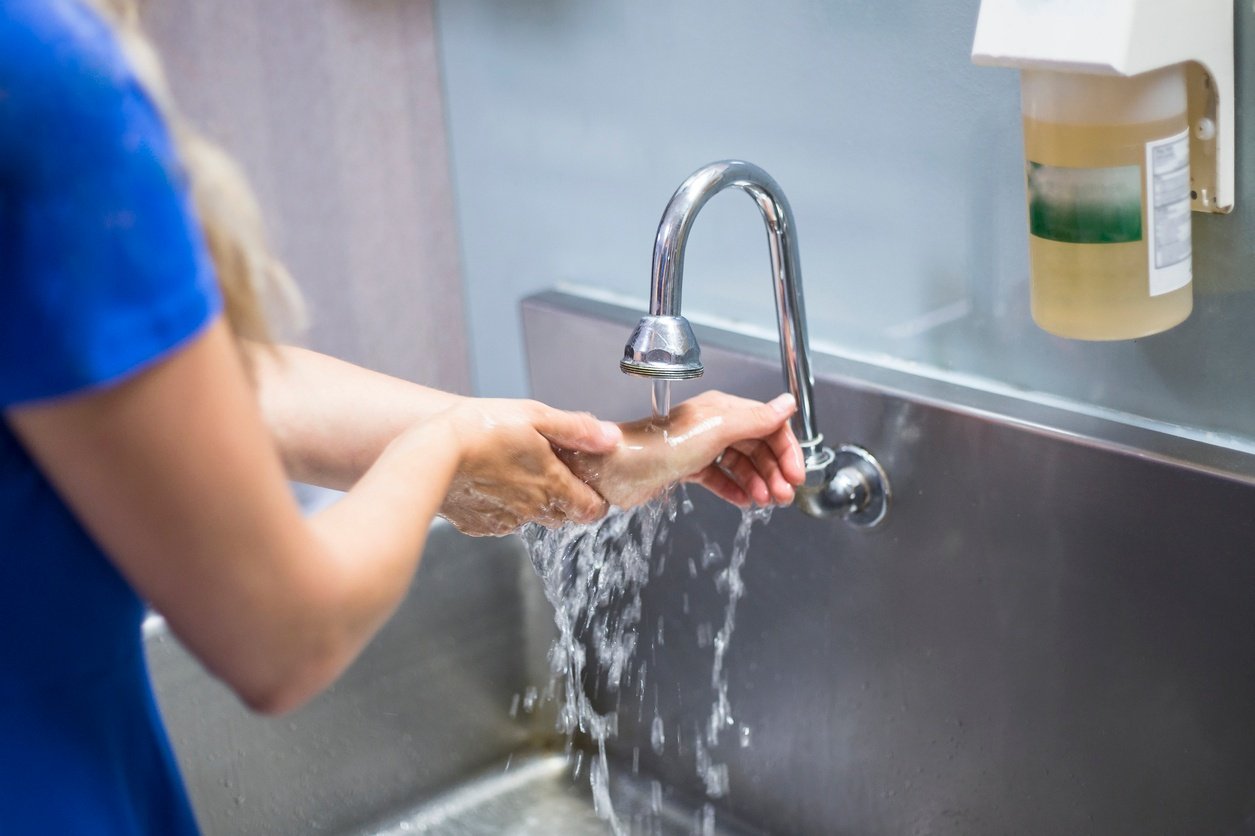
Through my experience as a nurse assistant, hand washing was always emphasized: when I entered a hospital room, before I touched a patient, after I touched a patient, and when exiting the room. I completely understood the hand-washing protocol and I did it eagerly, but others did not.
One patient was admitted to the hospital because of a fall resulting in a fractured hip. She was expected to be released in a few days, but she became very ill. Out of nowhere, she started to experience a fever, rash, and flu-like symptoms. After tons of medical tests, it turns out that she had contracted HA-MRSA. HA-MRSA is methicillin-resistant Staphylococcus aureus, a bacterium with antibiotic resistance, usually contracted in a healthcare facility.1 Her “few days in the hospital” turned into more than a month, as shortly after she was diagnosed with MRSA she also contracted with pneumonia, due to a lack of infectious control throughout the hospital. Eventually, after rounds of strong intravenous antibiotics and costly hospital bills, she was able to go home.
Hospitals are not as clean as one would expect. Every year patients die because of the spread of infections in hospitals.2 Common healthcare associated infections (HAIs) include but are not limited to: central-line associated bloodstream infections (CLABSI), Clostridium difficile (C. diff), pneumonia, MRSA, and urinary tract infections.
Read our post about preventing HAIs through education
Individuals want to trust that hospitals are using proper hygiene and cleanliness protocols to protect not only their patients, but also the providers, employees, and visitors.
Key factors to infection control
Simulation can play a huge role in teaching the basics of infection control. Educating students and current healthcare providers prior to being face-to-face with infections can reduce the spread of infectious disease. (Nothing can prevent disease 100 percent because of the circumstances of a healthcare facility.)
- Hand hygiene: Thorough hand-washing and donning of gloves
- Environmental hygiene: Disinfecting surfaces where germs can thrive
- Screening and isolating patients: Screening patients for infection in order to treat, and keeping patients with similar infections or health issues grouped together
- Staff vaccinations: Healthcare professionals should be up-to-date on recommended immunizations
- Surveillance: Data collection regarding infection patterns and regular assessment of infection prevention protocols
- Antibiotic stewardship: Healthcare professionals should monitor their facilities for misuse and overuse of antibiotics; inappropriate antibiotic use can lead to drug-resistant illnesses
- Care coordination: A breakdown in communication can lead to overlooking processes and uncertainty in who did what to treat a patient
- Comprehensive unit-based safety programs: A strategic framework for patient safety improvement. 3
It is important that students learn how to properly wear personal protection equipment, prep patients for procedures and hands-on contact with an individual, how to properly dispose of infectious waste and potentially harmful objects, and how to keep the environment clean so everyone in contact with a healthcare facility has a low risk of contracting a HAI.
Stock up your simulation lab or class room with infectious control products to ensure the safety of yourself, future and current healthcare providers, and patients.
Amanda Larkin is the Pocket Nurse Sales Intern for Summer 2019. She is pursuing a degree at the University of Pittsburgh in Health Services, and she has worked as a medical assistant, physician assistant aide, and marketing intern.
Sources:
1. https://www.mayoclinic.org/diseases-conditions/mrsa/symptoms-causes/syc-20375336
2. https://medlineplus.gov/infectioncontrol.html







